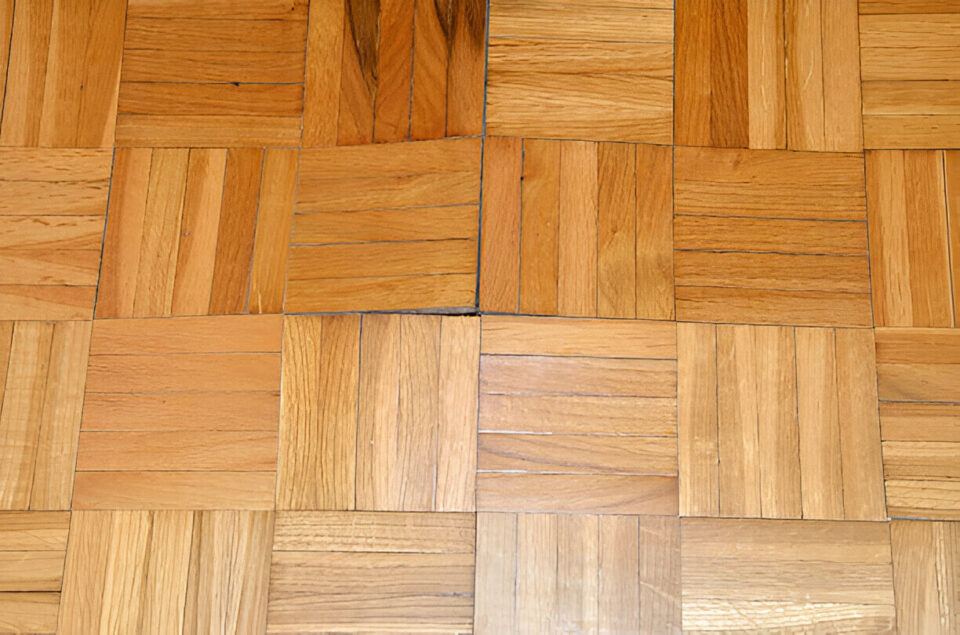A beautiful hardwood floor adds warmth and elegance to any home. However, over time, due to various factors like moisture, improper installation, or heavy foot traffic, hardwood floors can develop unsightly buckles.
Buckling, being one of the most common hardwood floor problems, occurs when the wood expands and contracts, which causes the floorboards to rise and warp.
While a buckled floor can be frustrating, it’s not necessarily a major issue. With the right approach and tools, you can effectively fix buckled wood flooring and restore your floor to its former glory. In this blog, we will discuss how to repair a buckled wood floor, from identifying the cause to implementing practical solutions.
Table of Contents
What Causes Hardwood Floors To Buckle?
Before we learn how to fix buckled wood flooring, it’s important to understand the root causes. Identifying the reason behind buckling ensures that you not only can fix the issue but also prevent it from reoccurring in the future. Here are some of the most common causes:
1. Moisture or Water Damage
Flooding, spills, or leaks can cause the wood to soak moisture and swell as can high indoor humidity levels.
2. Lack of Expansion Space
Wood floors need a small gap between the flooring and the walls to allow natural expansion and contraction. Without it, the planks may buckle.
3. Subfloor Problems
A poorly installed subfloor or moisture trapped under the floor can cause the wood to shift.
4. Temperature Fluctuations
Extreme temperature changes can cause wood planks to contract and expand, resulting in warping.
How To Fix A Buckled Hardwood Floor?
Now, before you begin, make sure to identify and resolve the moisture issue to ensure there’s no underlying moisture problem. To do so, check pipes, windows, and nearby appliances for any leaks and fix any water source before proceeding with repairs. You can also use a dehumidifier to reduce indoor moisture, especially in humid climates.
Minor Buckling
If the buckling is minor, you can fix the issue yourself. All you have to do is apply weight to the affected area. Place heavy objects like books or sandbags on the buckled boards. However, be cautious not to apply excessive weight, as this could damage the floor further.
If the boards are loose, you can screw them down to the subfloor. Use specialised screws designed for hardwood floors to avoid damaging the wood.
Severe Buckling
If the buckling is severe, you may need to remove the buckled planks to assess the damage or replace them with new ones. Follow the steps to learn what you are supposed to do:
-
Take a pry bar or chisel and gently lift the buckled planks, being careful not to damage the adjacent boards. Also, remove the nails or adhesives holding the damaged boards in place.
-
If the moisture has caused the buckling, leave the area exposed for at least 24-48 hours to allow the subfloor and wood planks to dry thoroughly.
-
If the planks, however, are still in good condition, you can reinstall them but for damaged ones, replace them with new matching planks and install them onto your floor.
-
Use nails or adhesive to secure the new or existing planks to the subfloor and tap the planks gently into place using a mallet and a tapping block.
-
When installing the boards, leave a small gap (about 1/4 inch) between the flooring and the wall to allow for natural expansion.
-
If the repaired section is noticeable, you may need to sand the area to make it blend with the rest of the floor. Once done, apply a matching wood stain and a finish for a seamless look.
Useful Tips To Prevent Your Hardwood Floors From Buckling
Wood floor buckling can be a significant eyesore, making it essential to take precautionary steps to prevent this issue. Here are some tips to help you avoid wood buckling:
-
Maintain proper humidity levels. Use a humidifier or dehumidifier to keep humidity between 35-55%.
-
Install moisture barriers under the wood flooring, especially in moisture-prone areas.
-
Check for leaks, spills, or humidity changes that could affect the flooring.
-
Prevent standing water from seeping into the wood by wiping spills right away.
The Bottom Line
Hardwood floor buckling is a common issue in many homes and it is important to repair it promptly to prevent long-term damage and restore your floors to their original condition.
However, if the buckling is extensive, has affected a large area of the floor, or if the repair involves replacing multiple boards, it may be best to consult a professional and fix buckled wood flooring for good.
Experts at Sanding Wood Floors specialise in repairing and restoring hardwood floors to their original splendour. With years of experience and advanced techniques, they can effectively address even the most severe cases of buckling, leaving your hardwood floor looking as good as new. Contact them today for any consultations.
You Can Also Read: How To Remove Rust Stains From Tiles?

